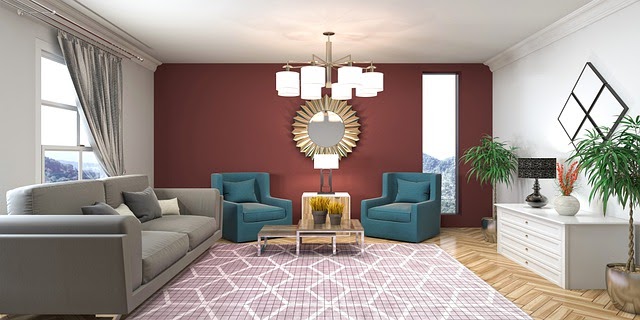Whether you’re undertaking a significant home renovation project or simply hoping to make a few minor changes with major impact, there’s no better way to do so than with interior lighting design. In fact, lighting is one of the easiest and most effective ways to improve your home’s look and feel. Yet many homeowners remain unaware of the power of lighting – and how to leverage it to their advantage to create truly inviting and functional living spaces.
The good news? You don’t have to be an interior designer to devise a brilliant lighting plan. This is especially true when you familiarize yourself with a few basic lighting design principles and interior lighting tips.
The Basics of Interior Lighting Design: Layered Lighting
There may not be a bible of interior lighting design, but if there was, “layered lighting” would be its central component. While it may seem complicated, it’s exactly as it sounds, referring to the use of multiple lighting types to create beautifully balanced spaces.
The first layer of home lighting is ambient lighting, which refers to the natural illumination that comes into your home, as well as any fixtures that act as substitutes for natural light. High-end light fixtures that fall into the category of ambient light include chandeliers, flush mount lights, pendant lighting, and other ceiling fixtures, as well as light kits on ceiling fans, track lighting, torchieres, recessed ceiling lights, and wall sconces. Many people assume that ambient lighting is enough on its own. However, comprehensive design plans must also include two other layers: task lighting and accent lighting.
Task lighting refers to illumination specific to performing certain activities. With so many people working from home these days, the importance of task lighting cannot be overstated. Whether you’re looking for light to cook, work, read, or play by, task lighting is your go-to. Common fixtures include desk lamps, table lamps, under-counter lights, pendant lights, swing-arm lamps, vanity lights, and adjustable floor lamps.
Last but not least is accent lighting. Often described as “mood lighting,” accent lights have the potential to influence the atmosphere and vibe of a room. In addition to determining the lighting aesthetic, accent lighting also serves the additional purpose of spotlighting architectural features, artwork, and other items that you’d like to showcase in a particular space. Common examples of accent lighting include wall sconces, can lights and uplights, picture lights, directed track or recessed lights, and cabinet lighting.
Note that some of these fixtures fall into more than one category. For example, wall sconces can serve as both ambient lighting and accent lighting. Additionally, adding a dimmer switch can transform chandeliers, wall sconces, and other overhead fixtures into accent lighting.
Knowing Your Needs
Now that we’ve covered the foundational interior lighting design principle of layered lighting, it begs the question: How do you know which types of lighting you need and for which spaces in your home? Just as our homes are not one-size-fits-all, nor is the answer to this question. Rather, the specific lighting mix included in your plan is a direct response to your unique needs and goals.
To devise the best lighting design scheme, you must first consider the following questions:
- Who will use the space?
- How will you use the space?
- How do you want to feel in the space?
- Are there any items or architectural features you want to highlight?
- Are there any items or architectural features you want to hide?
Use the questions above to guide your design process. For example, if you’re lighting a living room, you’ll have different answers than if you’re lighting a kitchen, bathroom, or bedroom. The best illumination is tailored to space and the people using it. Other considerations include the size of the room, the height of the ceiling, natural light sources, and the desired amount of light.
Choosing the Right Lighting
Once you’ve come up with a lighting plan, you’re ready for the fun part: choosing your light fixtures. This can be overwhelming, especially when there are so many wonderful options out there from fashion lighting leaders like Northeast Lantern and others. Just remember that there are no hard, fast rules. Nor does it have to be complicated. However, following a few basic guidelines can help you achieve a harmonious result.
Just like the style of your home is a matter of personal taste, so is the style of light fixtures. While everything doesn’t have to be matchy-matchy, your fixtures should complement their surrounding spaces. For example, if your home’s style is modern, lighting with clean lines will integrate seamlessly with the room’s aesthetic. Meanwhile, if your space is traditional, something more ornate or elaborate may be in order.
Another way to create a sense of cohesion is to stick with common colors, materials, and finishes. While coordinating lighting is one way to go, complementary lighting also adds visual interest. Not to mention that a beautiful fixture is – in and of itself – an element of beauty in a room.
Final Words
One last thing to keep in mind? While staying within a budget is important, failing to budget for high-end lighting is a mistake often made by homeowners. Given the tremendous potential of lighting to impact how you live (and feel) in your home, budgeting for better lighting is akin to budgeting for a better quality of life – and we can think of no better investment than that.
Follow Home Inside for more!
